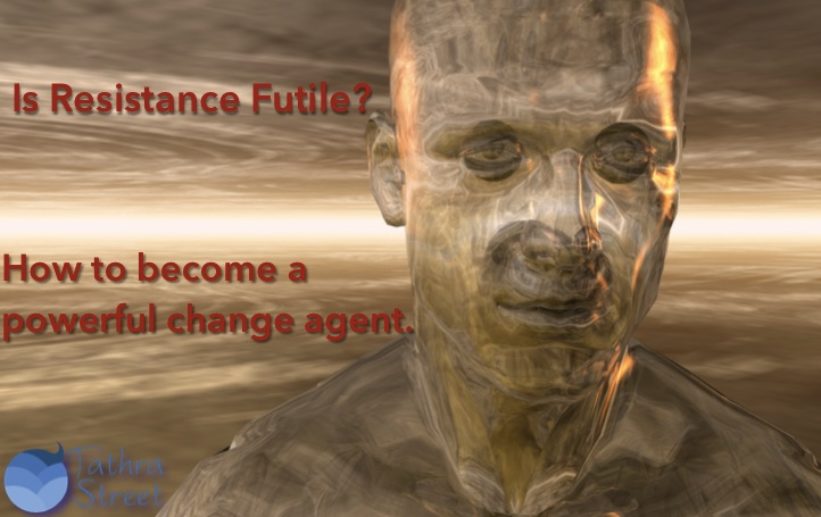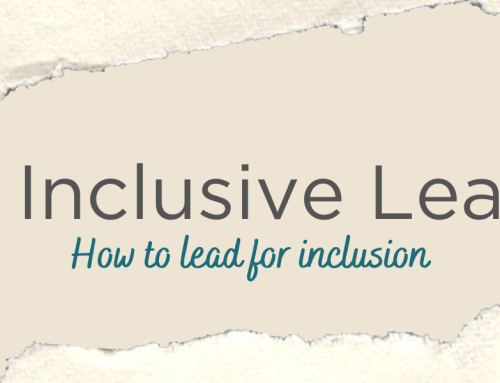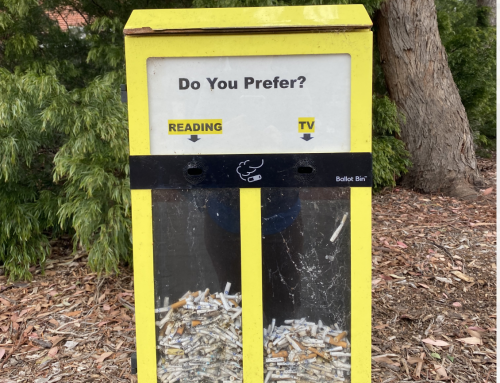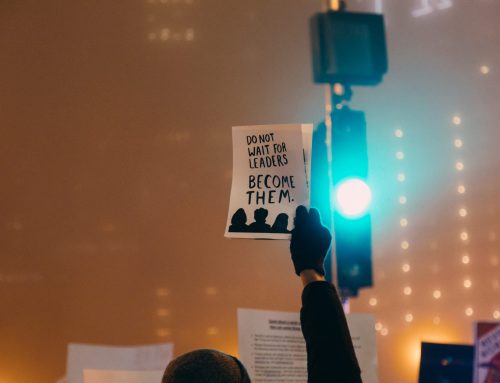You know the feeling, like you’re getting messages from the ‘Borg, that resistance is futile. You know that something has to change but it feels like there’s no point trying. It can bring a feeling of defeat.
Don’t believe the hype.
Things change, it’s part of life. Change is the only constant, it’s inevitable. And even though it seems entirely unlikely, trust me when I say, when you feel you can’t affect change, YOU CAN. Here are a few things that will help you see that it’s true. That you can become a powerful change agent.
Seeing our seeing
I’m going to ask you something that sounds a bit ridiculous at first. Can you see how you’re seeing it? Can you take a step back to get a look at the perspective or lens you’re looking at the situation through?
This is a technique from Otto Scharmer’s Theory U. It starts with being able to look at our perspective. It’s a bit like looking at your own eyeballs.
What is your point of view? Can you see that someone else might have a different perspective? From there, being more flexible in your point of view is possible. It can shake you out of the limiting belief that trying to make a change is futile.
If you can start to see how you’re looking at a situation you have a better chance of helping someone else see how they are looking at a situation. Once you can do that, you have an ally in making change.
Money talks
Once you have even a shred of agreement that something needs to change the next tool puts things into commercial terms to highlight the financial impact. This can be really useful for bean counters and those who hold the purse strings. Illustrate the cost of a problem it can motivate change in ways that logic and good ideas can’t.
For example, consider the cost of employee disengagement. We can tally up the cost of people being repeatedly late to meetings and pulling sickies and taking stress days/mental health days etc. These all have costs associated, many of which aren’t calculated in meaningful ways.
High turnover is another example of the cost of poor workplace culture. And when we add it all up, it comes out to an amount that is more than we imagine because we tend not to look at it.
The figures can be very compelling. When you can quantify the impact, it can be the wedge that drives open the option to look at the problem in new ways. And the question, “what can we do to change this?” emerges naturally.
Get Another Opinion
Regardless of how you go with the first two, this one is always a good way to get a fresh take on the situation. Find someone you trust to give you their take and ask what they would do. Get a few opinions and look for themes in the responses. From there you can form your own ideas on the situation based on others thoughts as well as trusting your own intuition about it.
You are a Change Agent
Change relies on getting others to support a divergent path. Once you’re clear on how you’re looking at the situation, are able to convey the financial impact, and got a few others perspectives, you can become a powerful change agent. You can help people see their own fixed perspective, loosen it up, especially with the financial impact, and get them on board to shake things up. Invite your allies to be part of the process, and co-create a new way through. This is how change happens.
















Leave A Comment